Ukraine’s F-16s Could Come With These Weapons
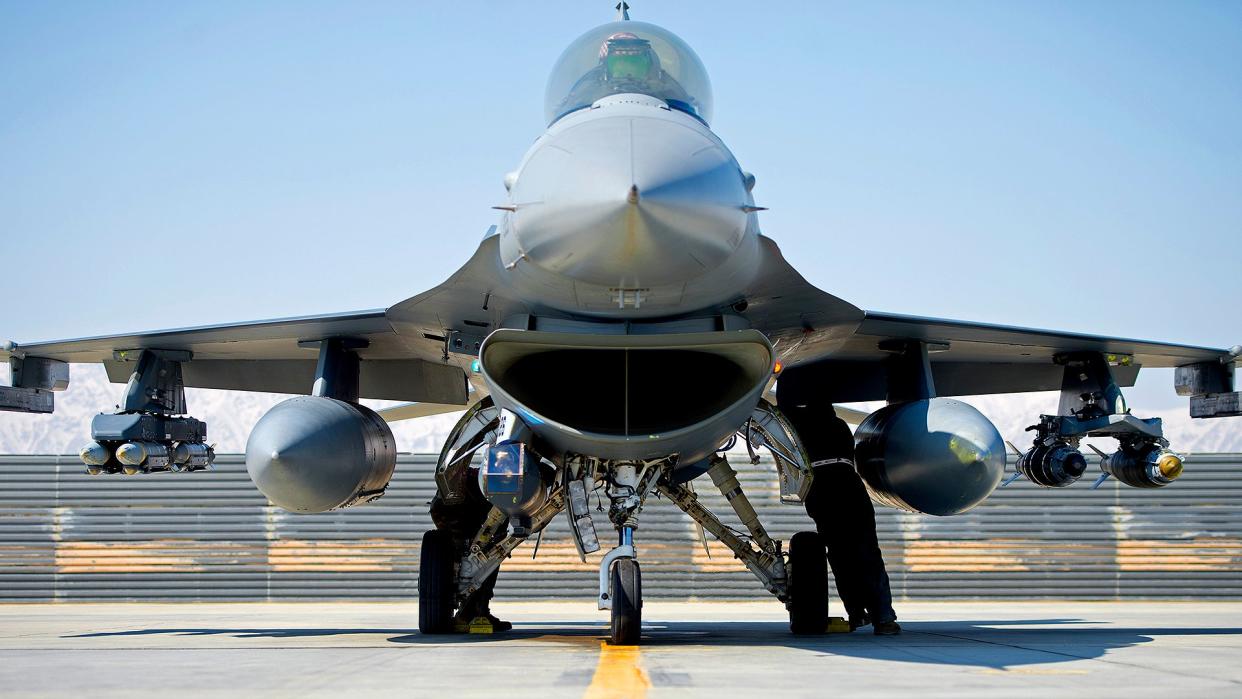
Now that debate around Ukraine getting F-16s is largely concluded, the questions of where the jets will come from and what weapons will be provided with them loom large.
There has been a remarkable amount of precedent already set for transferring advanced weapons to Ukraine that can be used by the F-16.
Weapons delivered to Ukraine so far that would be suitable for the F-16 include:
-AGM-88 High-speed Anti-Radiation Missile (HARM). The F-16 will be able to use this weapon far more dynamically and effectively than how it is currently being employed by Ukraine's Soviet-designed tactical aircraft. This will mark a major enhancement in capability and a big threat increase to many Russian air defense systems deployed in occupied areas.
-AIM-120 AMRAAM. The AIM-120 is already in service in Ukraine via its NASAMS air defense systems. They are likely using AIM-120A/Bs, at least for the time being. So giving Ukraine AMRAAM capability on its F-16s is all but a given. This is quite remarkable considering Egypt, one of the world's largest F-16 operators, still is not cleared for AMRAAM, and neither is Iraq, although there are a number of reasons for this beyond technological risk. The big question is if Ukraine will get the more capable AIM-120C variant, which we will discuss in a moment. Our feature on the implications of AMRAAM being approved for NASAMS use in Ukraine can be found here and another on arming Ukraine's existing fighters with AIM-120 here.
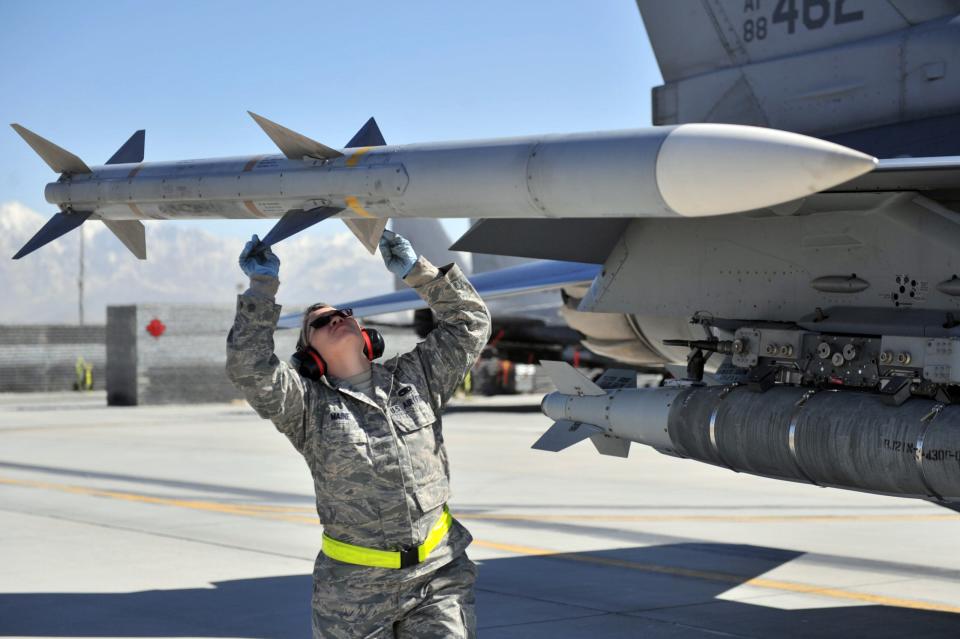
-GBU-53/B Small Diameter Bomb (SDB). SDB has already been cleared for use in Ukraine via the Ground-Launched SDB (GLSDB) system, of which the exact status remains unclear. But SDB will be a critical weapon for Ukraine's F-16s due to its accuracy, standoff range, ability to strike semi-hardened static targets, and the large numbers in NATO stockpiles to draw from.
-AIM-9 Sidewinder. Canada is providing AIM-9s to Ukraine. Exactly what variant of AIM-9 this will be is unclear, but they are likely AIM-9Xs for use with the NASAMS air defense system. AIM-9X is now a core munitions capability of NASAMS and would be very effective against short-range, low-flying threats like drones and cruise missiles that are being lobbed by Russia daily. It's also possible these could be older AIM-9L/Ms in Canada's inventory for Ukraine's fighter aircraft, although there has been no word that the Sidewinder is being integrated onto those Soviet-designed jets. With a lack of within visual range air combat, it seems odd this would be a priority at this time.
AIM-9X would also provide Ukraine with a very potent short-range air-to-air missile that can also be used with their F-16s' Joint Helmet Mounted Cueing Systems (JHMCS) for high off-boresight (HOBS) engagements. Even if they do not get JHMCS along with their aircraft, which will be capable of using it, the AIM-9X is a major capability for the Vipers and would be very helpful in defending against drones and cruise missiles. You can read all about employing AIM-9X without a helmet-mounted sight here.
-IRIS-T. This short-to-intermediate-range infrared-guided air-to-air missile is highly capable and can take the place of, or even augment the AIM-9X. IRIST-T (also known as AIM-2000) is already in service with Ukraine via the IRIS-T SLM ground-based air defense systems that have proven to be extremely effective against low-flying drones and cruise missiles. It is also capable of short-range HOBS engagement and has a long range for its class, providing it with some beyond-visual-range abilities.
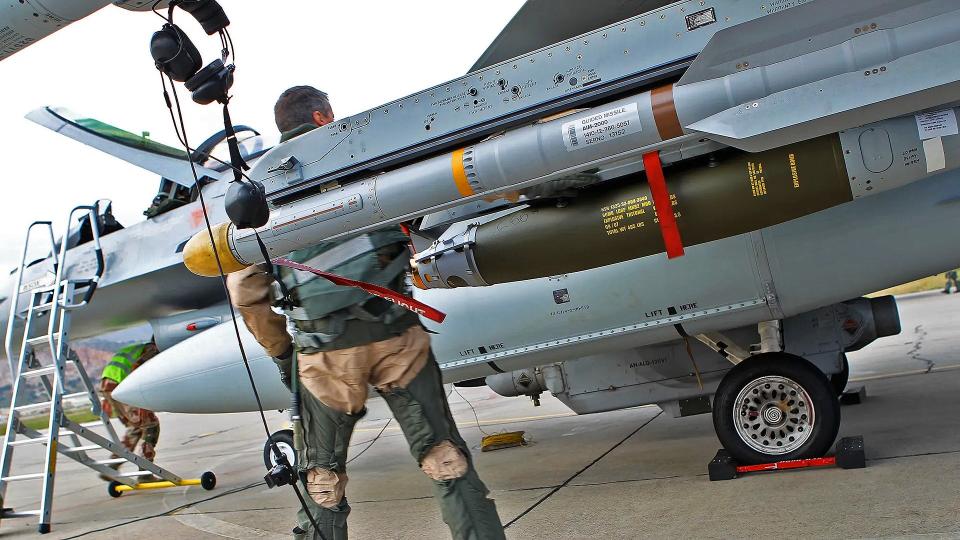
-JDAM-ER/JDAM. Ukraine is already employing JDAM-ERs — JDAMs with range-extending wing kits — against Russian targets. The addition of the F-16 will allow these weapons to be employed much more dynamically than they are now. You can read all about what JDAM-ER brings to Ukraine's fight here.
-Advanced Precision Kill Weapon System (APKWS). These laser-guided rockets that use the 70mm Hydra as a base offer an incredibly accurate, low-yield solution for targets like vehicles on the move or troops, even those standing in windows or doorways. They are already in service in Ukraine in ground-launched form, with new firing platforms coming soon. Their application via the F-16 would be limited, at least at this time, due to Russia's air defenses near the front lines, though. Morphing battlefield realities could change this in the future. There has also been experimental work done to use them in the air-to-air role against drones and cruise missiles.
-Miniature Air Launched Decoy (MALD). ADM-160s are thought to be in use in Ukraine and maybe being used in coordination with Storm Shadow missile attacks. MALD is fully integrated with the F-16 and it could prove vital to ensuring the success of standoff strikes and for breaking down Russia's anti-air umbrella.
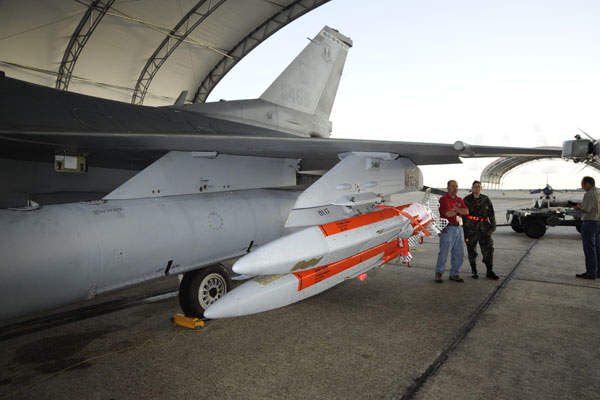
-AIM-7 Sparrow. While certainly far from cutting edge in the domain of air-to-air combat, the Sparrow is still a capable weapon and remains in service with a number of air arms, including Israel. For some targets, it can even have unique advantages, and it could be used against low-flying drones and cruise missiles. Ukraine already is fielding the AIM-7 Sparrow and RIM-7 Sea Sparrow for use on their SA-11 'Buk' mobile air defense systems as the missile stocks for the SAM batteries run dry.
-AGM-84 Harpoon. Ukraine has had ground-launched Harpoon anti-ship missiles for months now. Those weapons have about a 70-mile range, but when you put them on a tactical aircraft that equation changes drastically. F-16s can work as both targeting and delivery platforms for Harpoons, which could greatly complicate Russia's Black Sea Fleet operational calculus.
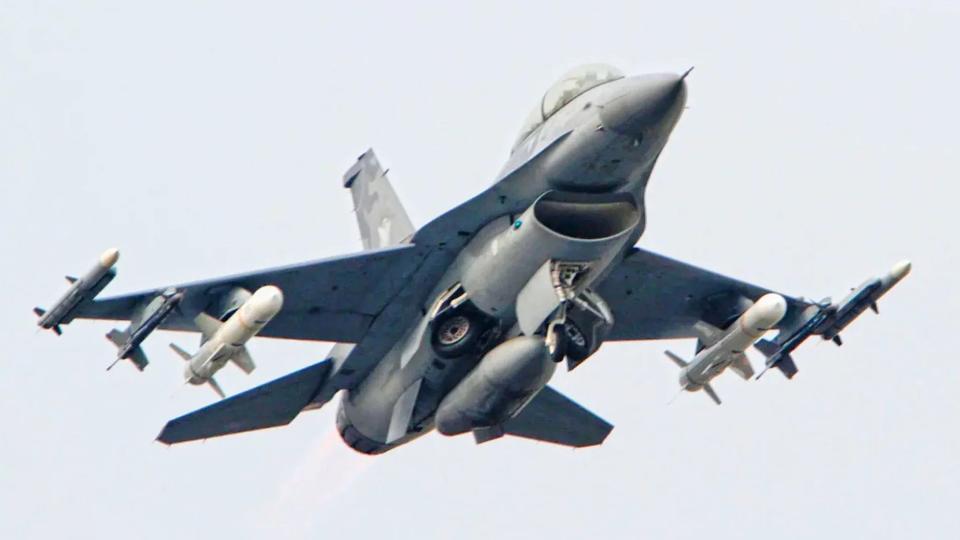
Beyond these preexisting weapons already in use or soon to be in use with Ukraine, there is no reason why Paveway laser-guided bombs and AGM-65 Maverick air-to-ground missiles could not be provided as well. As noted before, 70mm Hydra rockets would be made available along with the entire Mk 80 series of dumb bombs, including 500-pound Mk 82s, 1,000-pound Mk 83s, and 2,000-pound Mk 84s.
The use of any of these weapons will likely be very limited, at least based on normal battlefield circumstances today. All of them require the launching platform to be in close proximity to its target and some altitude is usually required to employ them under most scenarios, although there are some caveats. At this time, the F-16 would not be highly survivable when in a position to employ them. Once again, this is under most circumstances along the front lines, but there are some tactics that could be employed in certain situations to mitigate these risks. A ground offensive paired with a destruction of enemy air defenses (DEAD) campaign that pushes back Russian forces could possibly provide areas where tactical fixed-wing jets could operate closer to their targets to bring direct fires to bear.
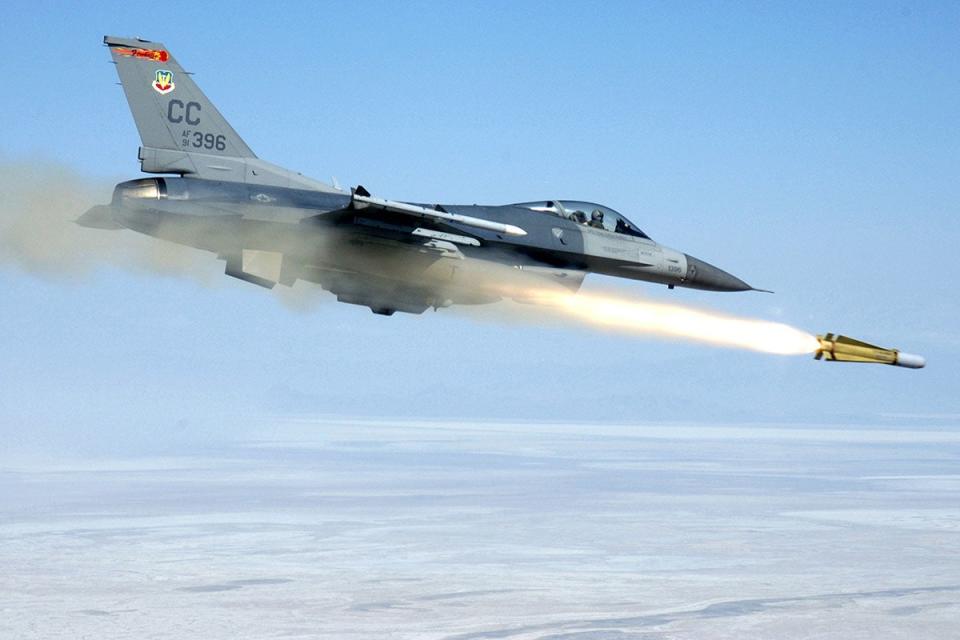
Targeting pods, such as Sniper and LITENING, which can be used to laser designate and/or provide precise coordinates of targets on the ground are also likely to come with Ukraine's F-16s. They can also provide non-traditional reconnaissance and air-to-air detection and long-range visual identification functions, which may be even more valuable depending on the unique threat circumstances near the front lines at the time when they arrive.
AGM-154 Joint Stand-Off Weapon (JSOW) is perhaps the most likely and exciting new advanced weapon Ukraine would receive with its Vipers. It is very well suited for the unique combat environment in Ukraine. It can autonomously glide to its target from over 70 miles away when launched at altitude or over a dozen miles when launched at low altitude. It could be especially useful for target geolocated static/semi-static air defense systems and its imaging infrared sensor it uses for terminal homing is impervious to radio-frequency jamming. It has a very small signature, as well, making it that much harder for Russian air defenses to shoot down.
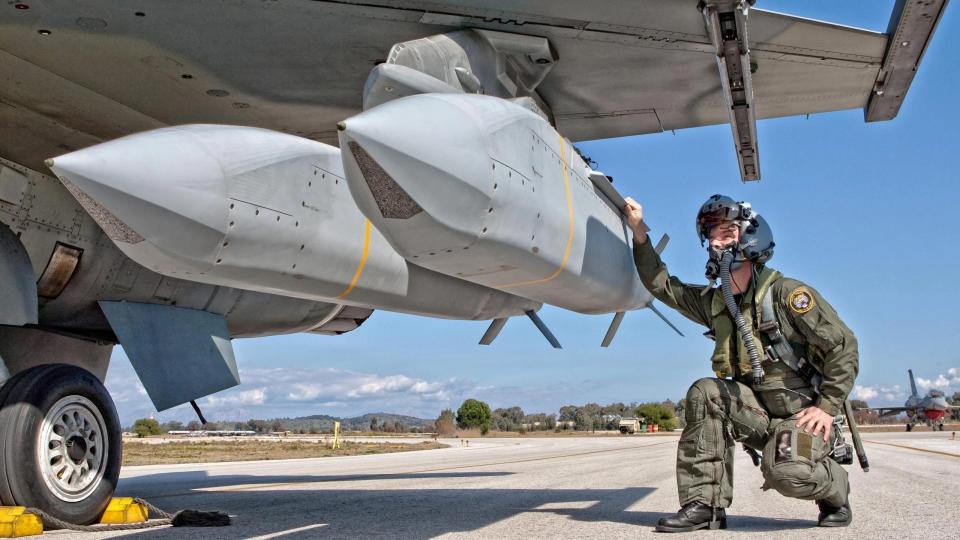
The Wind-Corrected Munitions Dispenser (WCMD) paired with a sensor-fuzed weapon, otherwise known as the CBU-105, could be devastating to Russian armor on or near the front lines. Due to its limited range, around a dozen miles maximum, employing it will be tricky. Although a range-extending wing kit concept does exist for it that drastically expands its reach, we are not aware of any of those kits being available. Still, WCMD provides some enhanced accuracy over distance and would be extremely valuable if it could be employed without very high risk to its launch platform.
Arguably the most valuable thing the F-16 provides Ukraine is a high-performance aerial platform with a NATO-compatible databus architecture that not only allows it to use most of the weapons in the NATO tactical jet munitions inventory but also the ability to more rapidly integrate new ones. This is something we have highlighted for over a year.
The F-16's standardized databus architecture allows the weapons to 'talk' to the jet and the jet to talk to the weapons, and in doing so, it provides the crew with full functionality of the weapons for maximum employment flexibility. Using workarounds to arm Ukraine's aging Soviet-designed jets with Western weapons has severely limited their feature sets.
This also means new capabilities can be more rapidly integrated in the F-16, which is very important considering the scarcity of certain types of munitions and the need to integrate new solutions to tactical problems quickly as the conditions on the battlefield change.
The F-16's databus also means missiles like Storm Shadow, SCALP-EG, and possibly Taurus, could find their way onto F-16s, although they would be near the limits of what the F-16 can carry in terms of weapons station weight and size. Storm Shadow is already being used by Ukraine via an improvised integration aboard the Su-24 Fencer. The same type of arrangement will likely be used for France's SCALP-EG and Germany's Taurus, if indeed they receive the latter. But it also means that other weapons can be integrated as needed. Brimstone, which Ukraine has been using for quite some time now, is one possible example. Although integrating new munitions is never easy and software alterations and testing take time, we are likely to see new weapons strapped onto Ukrainian F-16s that are currently not being used by the majority of NATO F-16 operators.
All that being said, one could argue the biggest questions about a Ukrainian F-16 fleet's armament surround two weapons in particular — the AIM-120 AMRAAM and the AGM-158 JASSM.
On the AIM-120 side, it comes down to which version Ukraine will get. The A/B variants are already a given, but the AIM-120C is the big unknown.
The AIM-120C is a major enhancement over the weapon's first-generation A/B models, and it comes with various different capabilities, a result of the constant evolution of the sub-variant and the AIM-120 in general. Even in its most basic, first sub-generation form, enhancements in range, guidance, resistance to countermeasures, and more are significant. Considering Ukraine's air force is being haunted by the long-range R-37 air-to-air missile, which Russian aircraft are firing at Ukrainian aircraft at great distances to limit their own risk, giving Ukraine a longer stick — any longer stick — would certainly be prized. It is what Ukraine fighter pilots seem to believe would make the biggest difference, too.
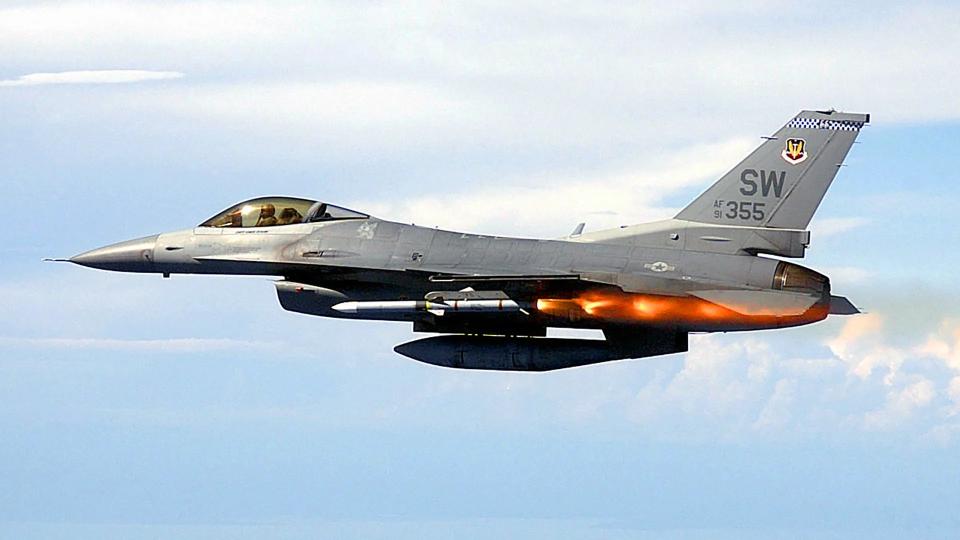
Then there is the F-16's radar. The F-16A/B MLUs, which Ukraine is likely to receive, have extensively upgraded AN/APG-66 pulse-Doppler radars. The F-16C/D models have the even more capable AN/APG-68. So pairing the missile with the radar capability is also important here, and the earlier C variants matched with the AN/APG-66 would be a fine fit. But once again, any active air-to-air missile would be hugely welcome as Ukraine's own fighter pilots have been pleading for them since the war began. Even the AIM-120A/B would be a huge upgrade, especially when paired with the F-16's many other advantages over their Soviet-designed MiG-29s and Su-27s.
There is also the idea being passed around that Ukraine could receive F-16s with upgraded AESA radars. I find this highly unlikely, especially in the near term, due to availability, timeline, and technological risk.
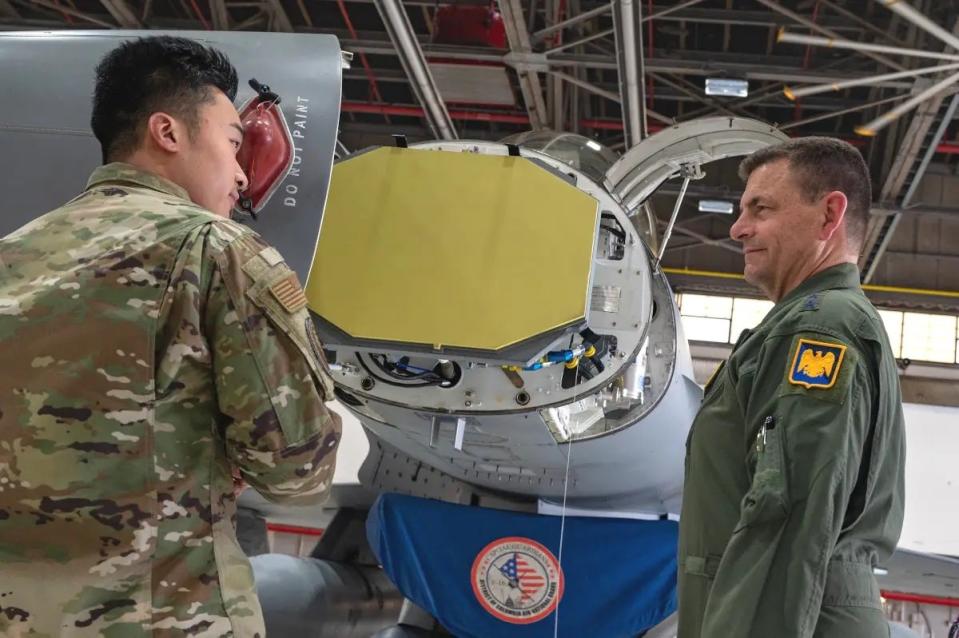
Still, such an upgrade would provide a huge leap in sensor capability for their F-16s and would bring the best out of the AIM-120C and make it that much more effective in Ukraine's challenging combat environment. In fact, the radar would outclass the missile, with the newer and greatly enhanced AIM-120D, or the new AIM-120C-8 variant, or even the AIM-120C-7, being better matched with its capabilities.
Now we come to the biggest wild card of them all — the AGM-158 Joint Air-to-Surface Standoff Missile or JASSM. First introduced into service 20 years ago, this is a high-end, low-observable (stealth), complex, and survivable air-launched cruise missile even in its most dated form. I find it unlikely that these weapons would be transferred to Ukraine based on the technological risk involved in doing so.
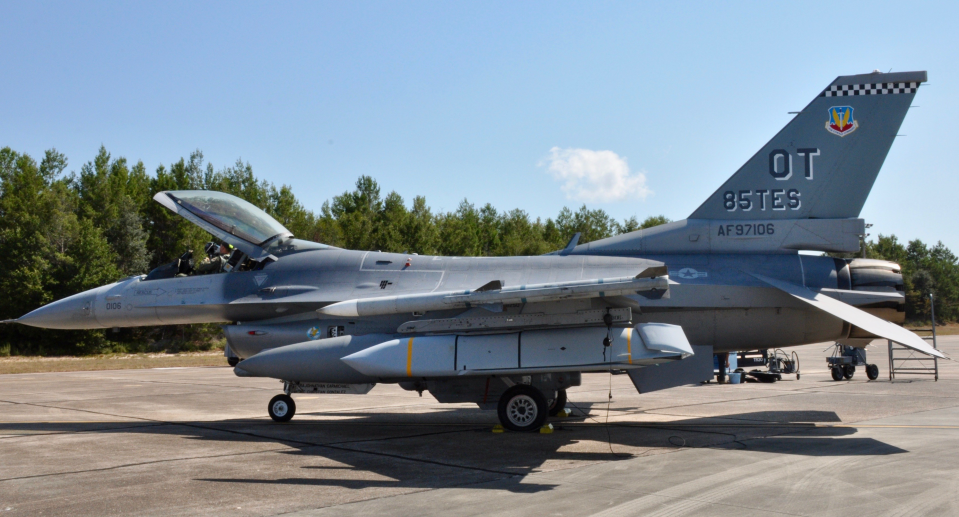
The JASSM family is quickly growing, with longer-ranged and more advanced versions already in the inventory (JASSM-ER) and even more capable and longer-reaching ones in the works. The Long-Range Anti-Ship Missile (LRASM) is also a direct, advanced offshoot of JASSM and the U.S. has bet big on it should a major maritime fight come to pass. The idea of these weapons being compromised via landing partially intact behind enemy lines or even espionage is likely too troubling to risk. Even in Syria, they have been used in a country where the U.S. can and does openly operate. The U.S. has no such luxury in occupied parts of Ukraine if a worst-case scenario were to come to pass. Also, the weapon's range is far in excess of Ukraine's needs, although this could potentially be altered.
The missile's high survivability, heavy punch, and imaging infrared terminal targeting sensor with autonomous image-matching make it far less susceptible to GPS jamming and other electronic warfare tactics, which would certainly make it a prized weapon for Ukraine, but I just don't see it happening at this time.
Another key aspect of this is numbers. While there are thousands in the U.S. inventory, JASSMs are prized weapons that would be essential in a fight with China, one in which the target sets will be numbered in the tens of thousands, and standoff weaponry will be critical well beyond the opening days of the conflict. As such, turning them over in any significant numbers to Ukraine would invite risk for the U.S. on the contingency side.
That being said, it's definitely still a possibility. If we have learned anything in this conflict it's that it's unwise to consider any given weapon system is off the table completely.
Even if the U.S. won't provide them, but is willing to approve their use against Russian targets, other NATO members that have given great military support to Ukraine use JASSM — specifically, Finland and Poland. It's possible that a coalition could come together to donate smaller numbers of weapons for especially critical target sets.
If Ukraine were given cruise missiles for their F-16s by the U.S., I believe it will come in the form of a weapon not currently carried by U.S. F-16s — AGM-84H Standoff Land Attack Missile–Expanded Response, better known as SLAM-ER. This is because the USAF lacks an intermediate class of air-launched cruise missiles like SCALP-EG, Taurus, or Storm Shadow. But SLAM-ER could be a great fit for some of Ukraine's needs and these weapons would be coming from U.S. Navy stocks. While this is not a common F-16 weapon by any means, work has already been done to integrate it onto the F-16 for Turkey.
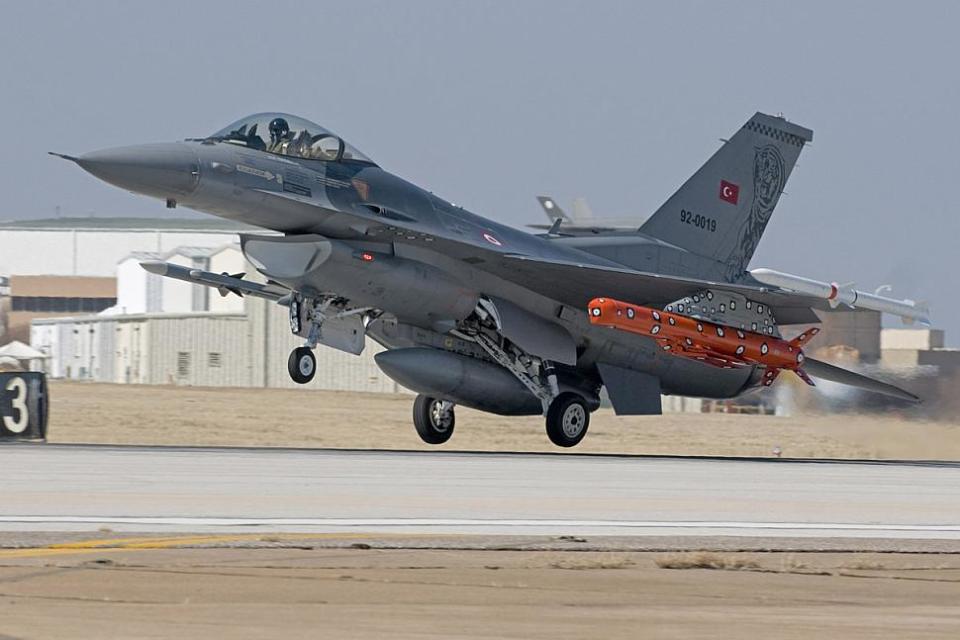
SLAM-ER, one of the most accurate standoff weapons in existence, can be employed in two primary manners. One, autonomously against a known target in a fire-and-forget manner. The missile will navigate on its own to the target and will use image matching to identify it and strike it. This is also a big plus for GPS-degraded combat environments and especially near key targets where GPS jamming is heavy. The other mode includes a 'man-in-the-loop' (MITL) control concept.
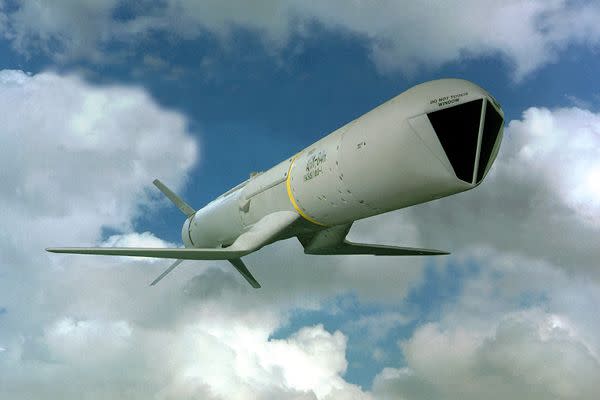
A two-way datalink pod on the firing or other aircraft allows the missile to be manually steered to its final impact point after it makes its way autonomously to the target area. This means that instead of a building being hit, the missile can strike a certain window or feature. It also means that it can be re-targeted in real-time and even hit moving targets under some circumstances.
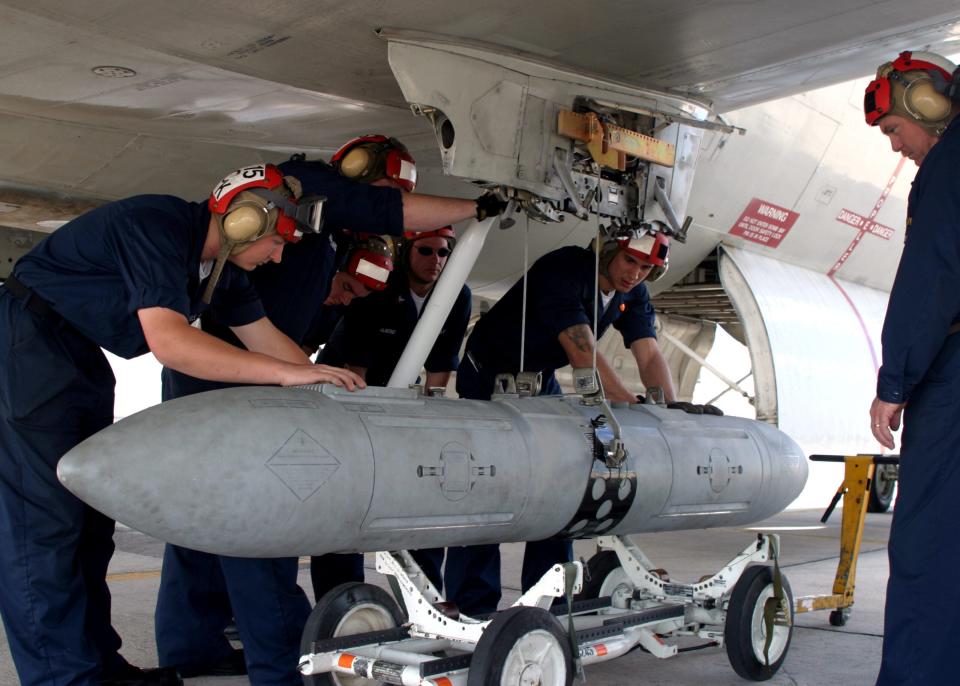
Using an active datalink for MITL control does have some drawbacks, including the need to maintain line-of-sight with the missile during its terminal stage of the attack. This could require the launching and controlling platform to fly at a higher altitude as the weapon can hit targets 170 miles away. This is not a problem for more shallow strikes but could be an issue for ones that want to strike deep into Russian-controlled territory. This could change over time as more ground is retaken and Russia's air defense network gets rolled back. The autonomous mode is also available, regardless. The datalink could also be a vector for an enemy electronic attack response.
South Korea, which is warming to providing Ukraine with deadly weaponry, also has stocks of SLAM-ERs, as they equip its F-15K SLAM Eagles, that could potentially also be leveraged.
There are other standoff weapons that could be donated, although their stockpiles would be more limited if not possibly non-existent. It really depends on what is left in storage or in particular air arms' inventories.
The TV-guided AGM-142 Popeye/Have Nap could also be useful, although it is unlikely that the U.S. still has them lying around in storage as they were retired nearly two decades ago. While much more limited in range — around 50 miles — it could be an effective weapon against targets not too far from the front lines and in highly degraded GPS situations. Turkey does still use these missiles actively and has a stockpile of them. South Korea may as well.
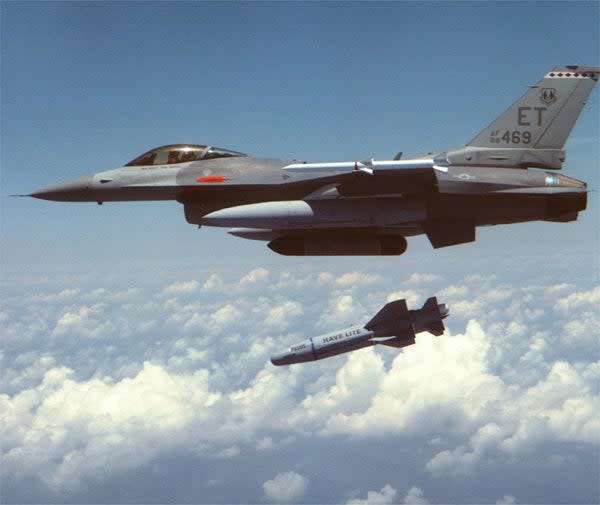
The AGM-130 — a rocket-powered GBU-15 variant — is another such weapon that could provide some standoff capability with a major punch and low technological risk. The AGM-130 was never built in great numbers and was retired from U.S. service a decade ago. If there are still some laying around in storage, it could provide a relevant weapon for Ukraine, even if limited in number, but it may be too big to be carried by F-16s as it was primarily a weapon used by the F-15E and F-111.
There are other standoff weapons that are already integrated onto F-16s but are not in U.S. inventory, such as the UAE's Hakeem missile, that could be useful. The Joint Strike Missile is another great fit for Ukraine, but it is not yet in widespread service and it too is a high-priority weapon for those that are buying it, including the United States.
There is also the possibility of modifying AGM-84 Harpoon anti-ship missiles to hit GPS coordinates or certain structures on land with unique and prominent radar signatures, although this is theoretical. Even converting old Harpoons into something similar to an original SLAM missile could be attractive.
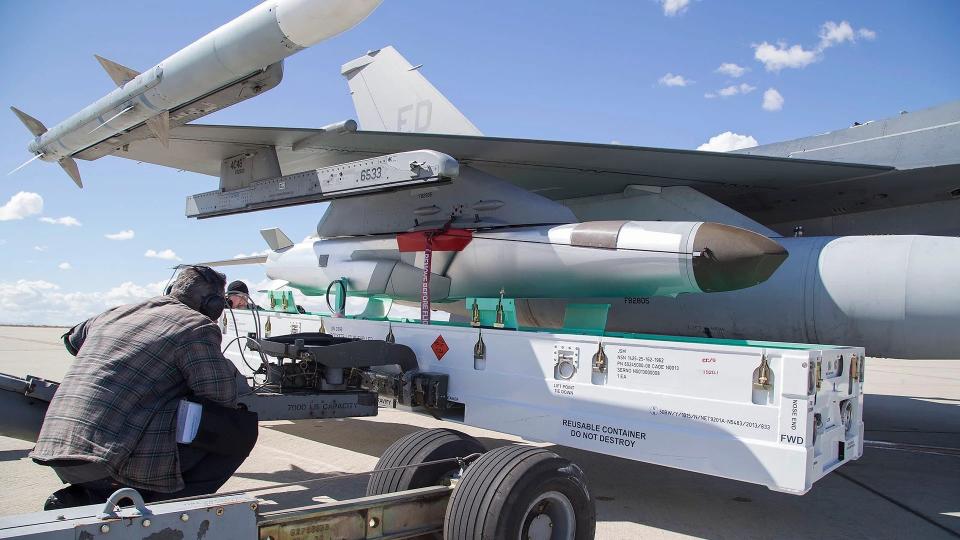
But with all that being said, the cold hard truth here is the standoff weapons Ukraine could really use for their F-16s are built by Israel.
From various Spice glide bombs to smaller cruise missiles like Delilah to air-launched ballistic rockets and much more, Israel's indigenous air combat munitions seem almost tailor-built for Ukraine. Israel also has deep stockpiles of many of these weapons and very warm production lines capable of building more. The issue is that Israel will not supply Kyiv with any deadly weaponry as it doesn't want to fracture its fragile relationship with Moscow, which is critical to allowing Israel to operate over Syria in order to strike arms transfers from Iran to militant proxy forces. So, barring a major shift in geopolitical winds, at least for now, that perfect match of capability and availability will remain theoretical only.
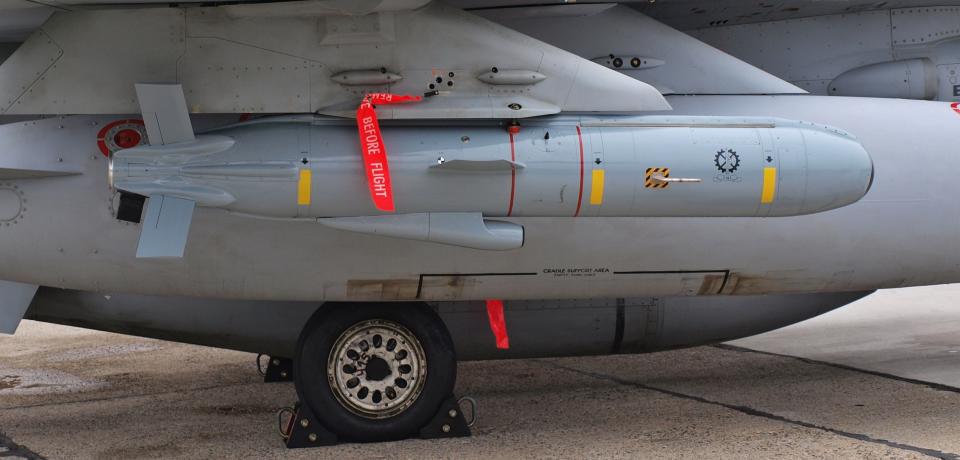
Turkey has also drastically expanded its domestic aerial munitions product lines to include a huge array of types, from glide bomb kits much like JDAM-ER to SDB clones to to small cruise missiles and more. Some of these may be available and could be produced in larger quantities, like glide bomb kits, others are quite newer and in development. While the exact efficacy of these systems is not known, they could be a huge help to Ukraine's F-16 fleet, even if just guided glide bombs.
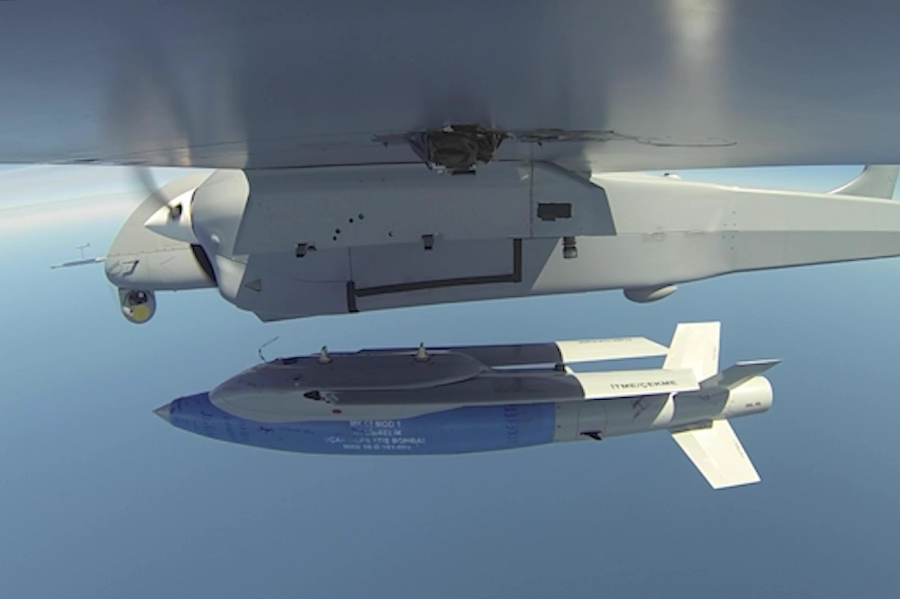
In addition, Turkey provided Ukraine with air-to-ground munitions and drones during the conflict, despite its ongoing relationship with Moscow, so it is possible that we could see some Turkish weapons hanging off the wings of Ukraine's F-16s.
Another major question is what type of electronic warfare capabilities will be given to Ukraine with their F-16s — if any at all. Podded self-protection systems would provide Ukraine with an extra layer of survivability against certain threats. Pods like the AN/ALQ-131 are in service with NATO operators, including those that could transfer aircraft to Ukraine. These systems have no use on F-35s, so giving at least some of them away would make sense. They would be helpful in shrinking the reach — even if to a limited degree — of some of Russia's most troubling anti-air systems and would better allow Ukrainian F-16s to operate at altitude, which would be critical for extending their standoff striking abilities.
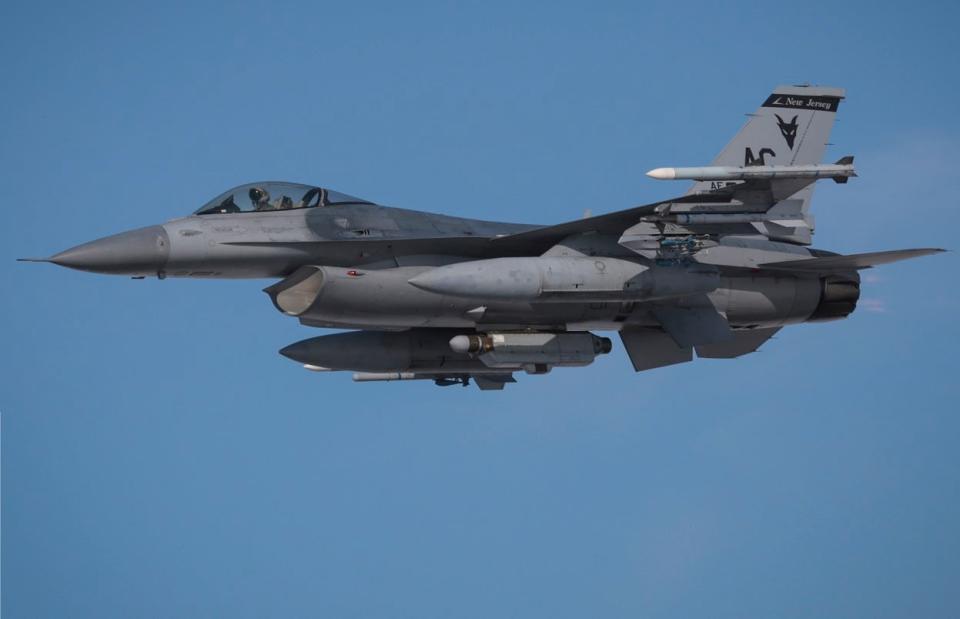
Israel, once again, has some of the best pods for exactly this functionality, and a number of them are used by various air arms with remarkable success, including the USAF's own aggressor force. It's possible we could see them appear in Ukraine as they are non-kinetic and oriented for defensive applications. Israel has proved counter-drone electronic warfare systems to Ukraine for instance, but it is still an unlikely source.
Missile approach warning and countermeasure pylons would be of great use to Ukraine, especially in the very restrictive and dangerous counter-air environment their F-16s will operate in. They provide near-spherical coverage that alerts pilots to incoming missiles and are integrated into the jet's countermeasures system to release expendable decoy flares or chaff as needed. They also hold extra expendables. Some come with onboard electronic warfare capabilities as well. These systems are in use by some NATO F-16s operators and could very well end up on Ukrainian Vipers.
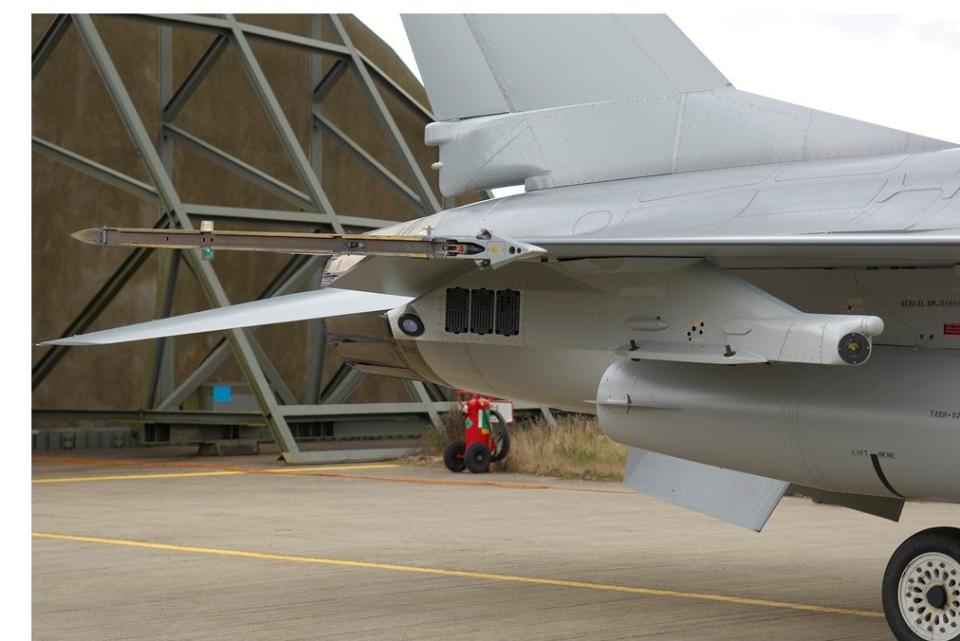
Other stores, like the HARM Target System (HTS) pod, would be very helpful in detecting, geolocating, and suppressing or destroying Russian anti-aircraft systems. If anything, HTS could provide enhanced situational awareness, but we are unlikely to see it in Ukraine anytime soon. They take additional tactics work to employ in the Wild Weasel role, as well as advanced training, and time is not really a luxury Ukraine has right now, but that could change if the war drags on. There are also technological sensitives that likely go with this system and its digital backbone.
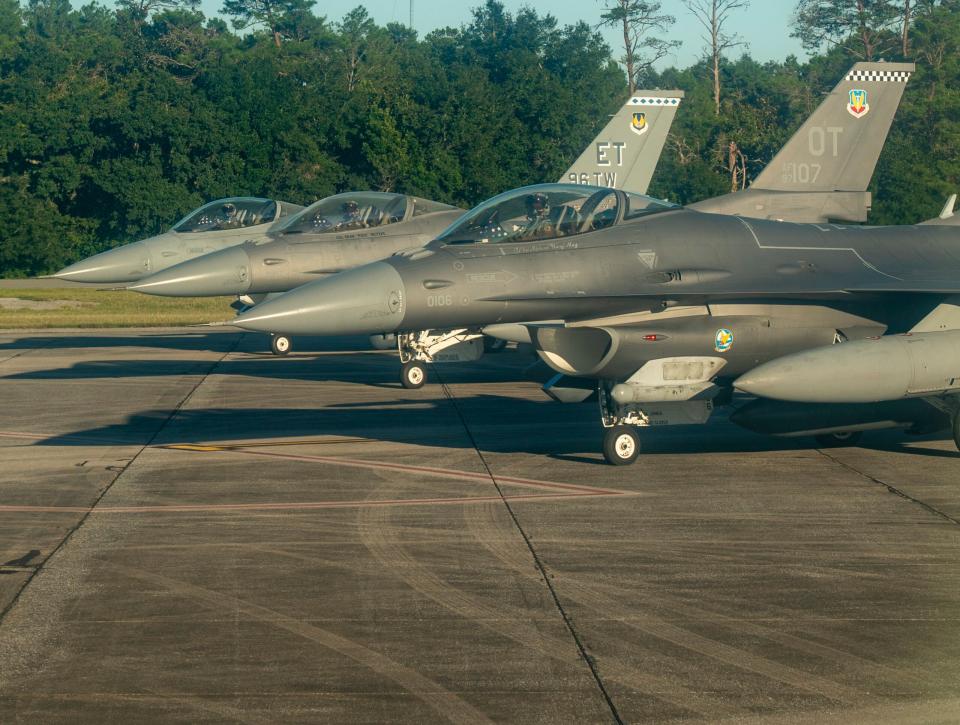
Reconnaissance pods, like the DB110, are another capability that could be useful for Ukrainian F-16s, but once again, the counter-air threat could limit how they are employed at this time.
We will have to wait and see exactly how the F-16 deal for Ukraine pans out, but hopefully, this gives a general overview of what could end up being delivered with those aircraft and what could possibly show up in the future. Of course, it also depends on how long this war lasts. Ukraine would not need these weapons as urgently if hostilities come to an end or even a pause, but being able to protect its sovereign territory from the air is a mission that will exist as long as Ukraine remains an independent nation. And as always, predictions are just that. This conflict has proven that what seems highly unlikely one day can turn into reality on another.
Regardless, the arrival of F-16s will be an important boost to Ukraine's warfighting capability. The weapons received for use with the F-16s will largely dictate their true value in the near term. But the donation of F-16s really represents a bigger investment in the country's long-term security than anything else.
Contact the editor: tyler@thedrive.com

